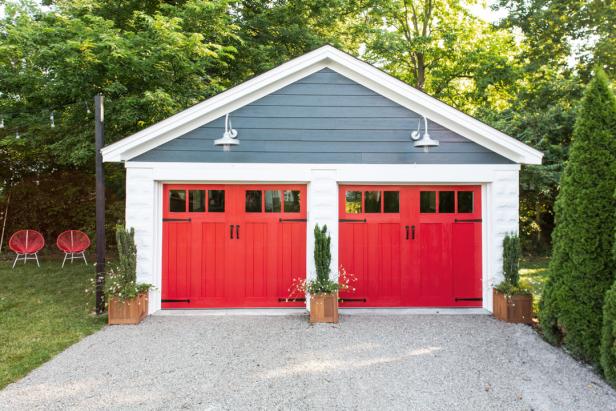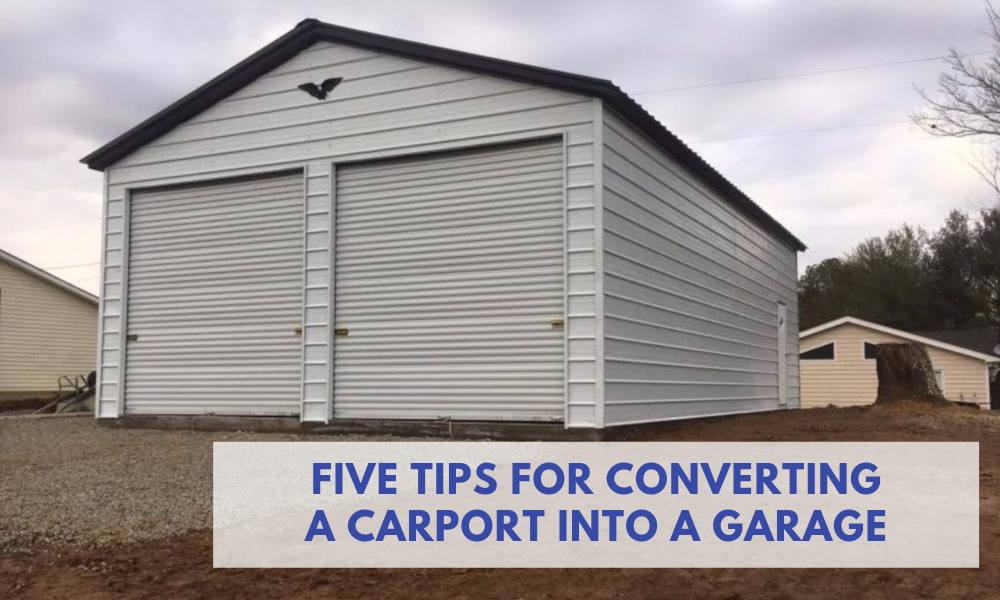
Garage shelving can make your garage more spacious. There are many garage shelving options, including wall and freestanding. But it is essential to select a unit that is sturdy enough to store the items you have in your garage. The right material choice is crucial when selecting a shelving unit. Certain materials are more durable and more resistant than others to spills.
Garage shelving can be made from metal, MDF, or particle board. Particle board is light but more likely to stain than steel. If you plan to store heavy items, such as tools and equipment, you may want to opt for a heavier-duty shelving system.
Wall-mounted shelves allow you to maximize your storage space. Mounted shelves attach to your garage walls via brackets. These brackets are made out of metal and attach to the garage wall studs. For best results, you should mount the shelves at least 16 inches from the floor and 20 inches apart. Ceiling-mounted shelving systems can be used that project downward. These units are lighter than a traditional freestanding unit, making them more portable.

Freestanding units, which are usually made from metal or wood, can be mounted to the ceiling and wall. They are more flexible than other types of shelving, though they take up floor space. A drill and some tools are required to install them.
Chrome mesh or steel wire are common materials for adjustable rail shelves. Vertical metal tracks can be installed on the wall. The brackets are inserted into slots. The shelves are adjustable, which allows you to add and remove items as needed. They are typically designed to store heavy objects, but they can be easily moved to create more storage space.
Particle board can be used for shelving but can stain from engine fluid leaks. Metal shelving is nonporous, doesn't absorb chemicals and is ideal for storage of paint and other chemical products.
MDF and particle board can be a great choice for those who don't need heavy items to be held, but still want strong structural integrity. Both are sturdy and easy to assemble. These units are also powder coated to prevent scratches and dents.

Particle board and MDF are generally lighter than metal, but the weight capacity isn't that much better. Plastic shelving can be moved easily and is much cheaper than MDF. Plastic shelving is cheaper than MDF and easier to clean, so it might not be the best choice for a messy or wet garage.
An adjustable rail shelf is another option. These shelves are also flexible but require you to locate studs to attach the track to. Some shelves are not suitable for concrete over drywall.
Depending on the materials used, the price of your garage shelving will vary. You can impact your energy bills by choosing the right material. Be sure to use a temperature-controlled space if you plan to store food or hazardous materials. To avoid spills or stains, it is important to cover shelves.
FAQ
How much does it take to tile a bathtub?
Do it yourself if possible. Full bathroom remodels are an investment. If you think about the long-term advantages of having a gorgeous space for years to follow, it makes good sense to invest quality fixtures.
The right tiles can make a significant difference in the look and feel of your room. So whether you're planning a small project or a major renovation, here's a quick guide to help you choose the best products for your home.
First, you need to choose which flooring material you want. Common choices include ceramics and porcelain as well as stone and natural wooden. Next, choose a style such as a classic subway tile or a geometric pattern. Select a color palette.
If you are remodeling a large bathroom, you'll likely need to match the tile with the rest. You might choose white subway tiles in the bathroom and kitchen, but use darker colors in other rooms.
Next, determine the size of the project. Is it time for a small update to the powder room? Would you prefer to add a walk in closet to your master bedroom?
After you have established the project's scope, it is time to visit local stores and view samples. This will allow you to get a feel for how the product is assembled.
Shop online for amazing deals on ceramic and porcelain tiles Many sellers offer discounts and free shipping for bulk orders.
How should you renovate a home?
First, the roof. Second, the plumbing. The electrical wiring is third. Fourth, walls. Fifth, the floors. Sixth, the Windows. Seventh are the doors. Eighth, it's the kitchen. Ninth are the bathrooms. Tenth, garage.
Once you've completed these steps, you can finally get to the attic.
You might consider hiring someone who is skilled in renovating your house. Renovations take time, patience, and effort. It can also be expensive. So if you don't feel like putting in the hours or the money, then why not let someone else do the hard work for you?
Renovations aren't cheap, but they can save you tons of money in the long run. You will enjoy a more peaceful life if you have a beautiful house.
Why should I remodel my house rather than buy a new one?
While houses may get more affordable each year, the square footage you pay is still the same. Although you get more bang, the extra square footage can be expensive.
A house that isn't in constant maintenance costs less.
You can save thousands by remodeling your existing home rather than buying a completely new one.
Remodeling your home can make it more comfortable and suit your needs. Your home can be made more inviting for you and the family.
What are some of the largest costs associated with remodeling your kitchen?
There are several major costs involved in a kitchen remodel. These include demolition, design fees, permits, materials, contractors, etc. Although these costs may seem relatively small, if you take them all together, they can quickly add up. But when you combine them, they quickly add up to be quite significant.
The most expensive cost is probably the demolition. This includes removing the old cabinets, appliances, countertops, flooring, etc. The insulation and drywall must be removed. Finally, you have to replace those items with new ones.
Next, an architect must be hired to create plans for the space. To ensure your project is compliant with building codes, you will need to pay permits. Next, you will need to hire someone to actually build the project.
Finally, after the job is completed, you must pay the contractor. Depending on the size of the job, you could spend between $20,000 to $50,000. It is crucial to get estimates from several contractors before you hire one.
Plan ahead to cut down on some of these costs. You might get better deals on materials and even save some time. If you know what needs to be done, you should be able to save time and money during the process.
For example, many people try to install their cabinets. They believe this will save money, as they won’t have to hire professional installers. It is often more expensive to have professional installation services. A professional can usually complete a job in half of the time that it would take you.
Another way to save money is to buy unfinished materials. Pre-finished materials such as cabinets should be inspected before you purchase them. You can immediately use unfinished materials if you purchase them. You can always make a change if things don't go as you planned.
Sometimes, however, it's not worth all the effort. You can save money by planning your home improvement project.
How do I know if my house is in need of a renovation?
First, look at how recent your home has been renovated. A renovation may be a good idea if there have been no updates for several years. You might also consider a remodel if your home is brand new.
Second, make sure to inspect the state of your home. A renovation may be necessary if your home has holes in its drywall, cracked wallpaper, or missing tiles. But if your home looks amazing, maybe it's time for a remodel.
Another factor to consider is the general state of your home. Is the structure sound? Do the rooms look clean? Are the floors in good condition? These are essential questions to consider when choosing the type of remodeling you want.
Is $30000 sufficient for a kitchen remodeling project?
You can expect to pay anywhere from $15000-$35000 for a kitchen overhaul, depending on how much money you have available. You can expect to spend more than $20,000. If you are looking for a complete overhaul of your kitchen, it will cost more. If you are looking to upgrade appliances, paint or replace countertops, it is possible to do this for less than $3000.
An average cost for a complete renovation is between $12,000-$25,000. But there are ways to save money without compromising quality. You can replace an existing sink with a new one for around $1000. You can also purchase used appliances at half of the cost of new.
Kitchen renovations can take longer than other types projects so plan ahead. It is not a good idea to begin work in your kitchen and realize that you will run out of time.
Start early. Start by looking at different options and getting quotes from contractors. Next, narrow your options based on price and availability.
Once you've found a few potential contractors, ask for estimates and compare prices. It's not always the best option to go with the lowest price. It is important that you find someone with comparable work experience to provide an estimate.
Add all costs to the final cost. These might include extra labor costs, permit fees, etc. Be realistic about what you can afford and stick to your budget.
You can be open about your dissatisfaction with any of these bids. If you don’t like the first bid, let the contractor know and offer to give it another chance. Do not let your pride stop you from saving money.
Statistics
- According to a survey of renovations in the top 50 U.S. metro cities by Houzz, people spend $15,000 on average per renovation project. (rocketmortgage.com)
- Windows 3 – 4% Patio or backyard 2 – 5% (rocketmortgage.com)
- 5%Roof2 – 4%Standard Bedroom1 – 3% (rocketmortgage.com)
- 57%Low-end average cost: $26,214Additional home value: $18,927Return on investment: (rocketmortgage.com)
- 55%Universal average cost: $38,813Additional home value: $22,475Return on investment: 58%Mid-range average cost: $24,424Additional home value: $14,671Return on investment: (rocketmortgage.com)
External Links
How To
How to Remove Tile Grout from Floor Tiles
Most people don't know that tile grouting exists. It is used in sealing joints between tiles. There are many types available today. Each is used for a specific purpose. This article will teach you how to remove tile grout off floor tiles.
-
Before you begin this process, it is important to make sure you have all of the necessary tools. A grout cutter, grout scraper and some rags are all essential.
-
You will now need to clean off any dirt and debris that may have been under the tile. Use the grout cutter to cut away at the grout and gently scrape away any loose pieces. It is important not to damage tiles.
-
After everything is cleaned up, use the grout scraper for any remaining grout. Step 4 can be completed if you have no grout.
-
After all the cleaning is done, it's time to move on. You can now take one of the rags, and soak it in some water. The rag should be completely dampened. To ensure that the rag does not absorb water, dry it.
-
Then, place the wet towel on the joint where tile meets wall. Keep the rag in place until the grout starts to separate. Slowly pull down on the rag until it is pulled towards you. Continue pulling it backwards and forwards until all the grout has been removed.
-
Continue with steps 4 through 5, until the grout is completely removed. Rinse the ragout. Repeat the process if necessary.
-
Once you have finished removing all the grout, wipe down the surface of the tiles with a damp cloth. Allow to dry completely.